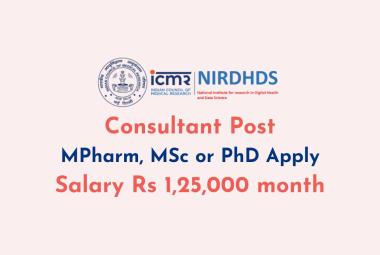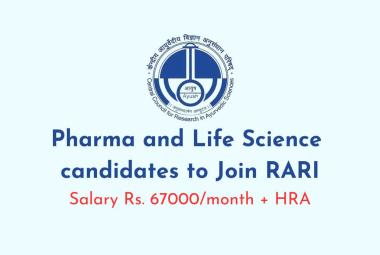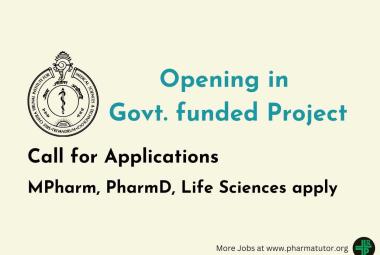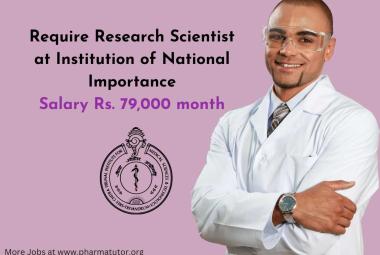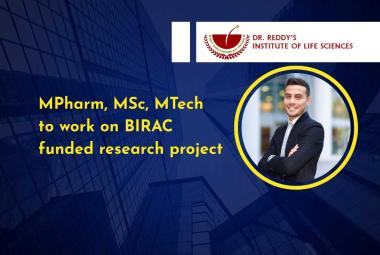ABOUT AUTHORS:
Prathima Patil*1, Tahseen Sameena1, S.P.Sethy, K.Shailaja1, P.Mishra2
1Department Of Pharmaceutical Chemistry, Sushrut Institute of Pharmacy
Taddanpally (V), Pulkal (M), Medak-502293.
2Department Of Pharmacology, Malla Reddy College Of Pharmacy
Maisimaguda, Dhulapalli, Secundrabad-14
pratima.patil0@gmail.com
ABSTRACT:
Though patents are effective tools for promoting innovation and protecting intellectual property in the pharmaceutical sciences, there has been a growing concern that the current scenario of patient and patent is not vivid in developing countries like India. A lot of complications arise when a pharmaceutical firm applies for patent for their product in developing countries. Innovation in global health care needs patent protection as a safeguard, so patent is a must requires item for health care industries. We can say Patent as a fuel for innovation simultaneously it can burn the pocket of economically backward patients in developing countries. But this thing should not happen as both patent and patient needs each other. A friendly relationship should exist between them. In this context we have discussed about various aspect of patent and patient related issue and also about sensible solution for the issue.
[adsense:336x280:8701650588]
REFERENCE ID: PHARMATUTOR-ART-2057
INTRODUCTION:
Patent and patient are the two sides of a coin. One can’t imagine a patent without patient and vice versa. Patent and patients are supplementary to each other i.e. both are dependent on each other. One must say that there is a friendly relationship exists between patent and patient. But one question arises here that does this friendly relationship is true or there is any rivalry is there. This question is oblivious because there is much evidence which can prove that some rivalry exist between this relationships. This controversy must be clarified to protect both patent and patient.
Let’s think about this issue from a positive side, that both patent and patient are friends. Much opinion will come in favor of this relationship. As we know Patent is a fuel for invention. Pharmaceutical industries must require a patent to accelerate their financial strength by bringing new chemical entity into market. Patent not only protect the new product from piracy but also give exclusive marketing rights for the new drug. During the patent term of a product its market price remains too high which helps to regains the finance that a pharmaceutical firm invests during the research and development of the new chemical entity. As Patent accelerates the research and development process which in turn provide more financial assets for a pharmaceutical firm eventually encourage further research and development. The patient enjoys the new healthcare service for life threatening disease Here a patent provide benefits for both patient and the pharmaceutical firm. Here both patent and patient gets a friendly relationship.
Let’s think about the negative factor exist in this relationship i.e. patent and patient are rivals. The main reason which is spoiling this relationship is the price factor associated with a new drug which is under patent in a country (Developing and undeveloped). As we all know that the market price of a patented drug will remain always sky touching (except some). Now the question is if a patient belongs to a developing country or an undeveloped country does he/she has the potential to buy the patented drug. Many of us will say no as in a developing country like India where people are still struggling in getting the basic needs for life in this condition how a patient will able to spend a huge amount of money from its pocket to buy the patented drugs. Now days this problem has solved a little bit by the interference of Indian patent law in granting the patents for new drugs. Indian patent laws showing negative response towards multinational pharmaceutical companies in granting patent for new drugs in India. This is a good sign for Indian patients as they will easily get the generic copies of the patented drug at a very lesser cost which will help in stabilizing the financial strength of the patient. But this strategy is creating a very serious negative impact to the total pharmaceutical community. MNCs have the generally marketing strategies to establish their product in large populated counties like India but they are facing severe regulatory resistance in getting patent for their drugs and finally they are not getting success in getting the patent. Due to this reasons multinational pharmaceutical companies are withdrawing their research and development investments from India. This is not only creating a deficit in job opportunity in R&D sector but also putting a question mark on future healthcare facility in India. This negative impact given by Indian patent law to multinational pharmaceutical companies will create a negative R&D activity in India and the patients cannot expect new innovative product for rare diseases. From the very ancient age we were dependent upon Foreign MNCs for new healthcare facility. Our indigenous R&D got some success but that is not enough to deal with problem in healthcare system in India. The above issue shows that a negative relationship exists between patent and patient.
From the above discussion a scenario come to the front that the patient and patient relationship is not going smooth in India, and if the government of India and IPAB don’t act soon then the future health care service and Indian pharmaceutical community will likely to see a Dark Age. From now onwards everyone associated in this system should think about definite solutions to bring this issue to normalcy.
PHARMACEUTICAL PATENTS:
A chemical patent, pharmaceutical patent or drug patent is a patent for an invention in the chemical or pharmaceuticals industry. Strictly speaking, in most jurisdictions, there are essentially no differences between the legal requirements to obtain a patent for an invention in the chemical or pharmaceutical fields, in comparison to obtaining a patent in the other fields, such as in the mechanical field. A chemical patent or a pharmaceutical patent is therefore not a sui generis right, i.e. a special legal type of patent. In the pharmaceutical industry, the patent protection of drugs and medicines is accorded a particular importance, because drugs and medicines can easily be copied or imitated (by analyzing a pharmaceutical substance) and because of the significant research and development spending and the high risks associated with the development of a new drug.
NECESSITY OF A PHARMACEUTICAL PATENT:
- Patents are a crucial factor in innovation ensuring that companies have possibility of being rewarded for the major investments needed to developments medicines and cures that vitally important to patent health worldwide.
- Patents provide a degree of assurance for investors to risk the capital necessary in the long development process and to fund new R&D initiatives.
- Legislative changes that diminish the value of patents could have a detrimental impact on decision makers considering investing in R&D based venture and could negatively affect needed long-term innovation.
Patent Is A Driver Of Economic Growth:
- The World Bank reported that science 1980 the world’s greatest economic gains have been achieved by developing nations that aggressively opened their economics to foreign technologies and business methods and protected the intellectual property rights of their developers.(figure-1)
- Country with weak IP protections receive less foreign direct investment
- R&D investment in Mexico gets tripled after the nation adopted full IP protection in 1991.
- South Korea, Japan, and Italy have experienced similar growth in sectors reliant upon strong IP protection.
Figure-1

Strong intellectual Protection Helps Deter Counterfeiting and Piracy;
- Strong patent protections safeguard against counterfeit, illegitimate and fake pharmaceutical product.
- Counterfeit medicines not only infringe intellectual property rights they are also very dangerous to human health. They can be not strong enough, too strong or potentially toxic.
- Counterfeit medicines are most prevalent in country with weak regulatory regime and little or no intellectual property rights (IPR).
NOW YOU CAN ALSO PUBLISH YOUR ARTICLE ONLINE.
SUBMIT YOUR ARTICLE/PROJECT AT articles@pharmatutor.org
Subscribe to Pharmatutor Alerts by Email
FIND OUT MORE ARTICLES AT OUR DATABASE
POSITIVE IMPACT OF PATENTS ON PATIENTS:
Patent Help Save Lives And Enhance Lives:
- Of all the advances of the 20th and 21st centuries, from aviation to the Internet, few have been as important and valuable to the preservation and enhancement of life as pharmaceutical and biotech innovations. In fact, according to University of Chicago economists, “Over the last half century, improvements in health have been as valuable as all other sources of economic growth combined”
- Prescription drugs, biologics and vaccines have revolutionized public health worldwide
- Tuberculosis was no longer a threat after the Bacille Calmette-Guerin vaccine was discovered in the 1920’s. By 1944, new antibiotics were being used to treat it.
- Polio was eliminated in 1952 when Jonas Salk discovered his vaccine.
- Thanks to new medicines introduced in the 1990s, people living with schizophrenia can now manage their condition more effectively than ever, and with fewer side effects. These medicines - dubbed "atypical antipsychotics" also help people, whose schizophrenia had not previously responded to treatment, making it possible for them to leave institutionalized care, return to work, and lead normal lives.
- In 1995, Invirase TM became the first protease inhibitor approved by the FDA for the treatment of AIDS. Since then, these drugs have become a key ingredient in“drug cocktails” that have reduced AIDS deaths in the U.S. by 70 percent.
- In 2001, the first targeted cancer treatment was approved. Since then more have been approved and they are proving to be a powerful new tool, with far fewer side effects than older therapies.
New Medicines Help Extend Life, And The Quality Of Life For Millions Of Patients
- Patients benefit extraordinary from new medicine- Keeping them out of hospital, off the surgery table and on the job and in the home
- Without new medicines the already staggering costs of uncured diseases will explode with the aging of baby boomers
NEGATIVE IMPACT OF PATENTS ON PATIENTS:Though patents are effective tools for promoting innovation and protecting intellectual property in the pharmaceutical sciences, there has been growing concern about 2 important way that patients in this field can have a negative effect on patient care and the practice of medicine. First, inventors can seek and receive patent on pharmaceutical products or research tools that stretch the statutory requirements for patenting. Second, patent holders in the pharmaceutical market can use legal loopholes or aspects of the patent registration system to extend exclusivity for inventions beyond what was anticipated by the Patent Act or subsequent legislation. The monopoly control bestowed by such inappropriate patents or manipulation of the patent system can limit options available to patients, increase the cost of health care delivery, and make cooperative research more difficult. In Response, several different government and market-based efforts have emerged to promote more equitable patent policy in health care that encourages dissemination of ideas while still supporting the development of innovative products.
PATENT RELATED ISSUE BY INDIAN PATENT LAW: In this section we have cited some example where Indian patent laws went against the patent filed by western pharmaceutical industries. These are as follows
INDIA REVOKES GSK CANCER DRUG PATENT IN PHARMA BLOW:
India has revoked a patent granted to GlaxoSmithKline Plc (GSK.L) for breast cancer drug Tykerb, a decision that follows a landmark India court ruling disallowing patents for incremental innovations that was a blow to global pharmaceutical firm.As a result, a GSK spokesman said its medicine would remain subject to patent protection until 2019. The additional patent on the particular salt of lapatinib used in Tykerb, which has now been rejected, would have extended that protection to 2021.
NOVARTIS LOSES INDIAN GLIVEC PATENT CASE:
It's double trouble for global pharma companies in India. On April 1, a Supreme Court bench comprising Judges Aftab Alam and Ranjana Desai dismissed Swiss drug major Novartis AG's seven-year-old plea seeking patent protection for its blood cancer drug Imatinib Mesylate, sold as Glivec. The court held that Glivec was not the outcome of an invention but a known substance as laid down in the Indian Patents Act, 1970.
BAYER MOVES BOMBAY HC AGAINST IPAB'S CL ORDER ON NEXAVAR:
German drug major Bayer AG has challenged the Intellectual Property Appellate Board's (IPAB's) order of compulsory license issued to domestic pharmaceutical company Natco Pharma in the Bombay High Court and has sought the court's intervention to protect its rights over patented cancer drug Nexavar. We introduce the product after years of research and investment, while companies like Natco merely copy and manufacture the product," said Ravi Kadam, senior counsel who is representing German pharmaceutical company in the case. "They (domestic companies) are making money while Bayer gets 7%, as royalty from the Indian Pharma company."
ROCHE CANCER DRUG SUFFERS PATENT SETBACK IN INDIA:
India has partly revoked patents granted to a Roche Holding AG (ROG.VX) breast cancer medicine, the Swiss firm said on Sunday, in the latest regulatory setback for western drug makers trying to crack the fast-growing market. Herceptin is Roche's third biggest seller and registered global revenues of 3.08 billion Swiss francs in the first half of this year. It treats breast cancer patients who have tumors that generate a protein called HER-2, which tends to make their disease more aggressive. Rulings on intellectual property and pricing have frustrated attempts by a number of foreign drug makers to sell their medicines in India.
INDIA STRIPS PATENT FROM ROCHE'S HEP C DRUG PEGASYS
India has always been a major thorn for Big Pharma and reiterated its stand by revoking a patent granted six years ago to Roche’s Hepatitis C drug Pegasys. The Intellectual Property Appellate Board (IPAB) deemed that there was no evidence to suggest that the drug was any better than existing treatments and also the fact that it was too highly priced for the Indian public.
INDIA REVOKES PATENT FOR PFIZER’S SUTENT
The Indian patent office has revoked Pfizer Inc.’s local patent for its cancer drug Sutent, delivering yet another setback to multinational drug companies over the contentious issue of intellectual property (IP) rights. Revoking the patent in an order signed on 24 September, but made public on Thursday, Nilanjana Mukherjee, assistant controller of patents and designs at the Patent Office, Delhi, said, “I conclude that the invention that is claimed in the patent (No. 209251 granted on application No. IN/PCT/2002/00785/DEL) does not involve any inventive step...and hence not patentable under section 2 (1) j of the Patents Act, 1970 (Indian Patent Act).”
INDIA REJECTS ASTRAZENECA PATENT APPEAL ON IRESSA:
AstraZeneca has once again failed in its attempt to get patent protection in India on its lung cancer drug Iressa. The country's Intellectual Property Appellate Board has dismissed an appeal filed by AstraZeneca challenging earlier rulings in August 2007 and May 2011 concerning the patent on Iressa (gefitinib). The board, for the third time, said it did not find merit in the appeal, claiming the invention was obvious. Natco Pharma (later joined by another domestic drug maker, GM Pharma), had opposed the initial patent application and the courts have backed their objections. AstraZeneca told Pharma Times World News that "regarding the Indian patent deal on Iressa, we are disappointed by the IPAB’s decision. We are confident in the validity of the claims in this patent application and are now evaluating our next steps". That could see the Anglo-Swedish drug maker take its case to India's Supreme Court.
GILEAD PATENT CASE TO HELP INDIAN FIRMS:
Another important issue is with regard to TDF's inclusion in the scope of the license. Presently, there is no product patent protection for TDF in India. The patent application filed by Gilead Sciences was successfully opposed in 2009 by generic companies such as Cipla and civil society organizations working on access to HIV/AIDS medicines using the pre-grant opposition system in India. Gilead has filed an appeal against that decision but the appeal has yet to be heard.
The above patent issue shows the reluctant nature of Indian patent law for patents filed by the western pharmaceutical industries. From 2006 to till date whatever the patent application filed by the western pharmaceutical firms most of them has been rejected by the Indian patent law. If we study the reason behind the disapproval of the patents for the above cited example it clears that Indian patent law (IPAB) does not recognize new forms of a known substance to be innovation as we saw in case of Glivec and Tykerb issue. Also Indian patent law is so sensitive towards the high price associated with a patented drug so the above two issue are not favorable for western drug makers to get patent approval for their product in India.
A SOLUTION ON THIS ISSUE: Einstein famously said, we can't solve problems by using the same kind of thinking we used when we created them. We have been seeing this patient and patent war since last one and half decade in India where IPAB is playing the role of a middleman. The Indian patent law (IPAB) form the very beginning is reserving its response more towards the Indian patient and less towards the foreign drug makers. This is a genuine expectation for Indian patient from its patent law as IPAB very well knows the economic status of our patients where very few people have health insurance and more than 70% of the people pay for healthcare expenses out of their own pocket as we don’t have government reimbursement facility for poor patients. So keeping these things in mind IPAB is very strict towards patent approval for new drugs. Governments are under increasing pressure to provide more cost-effective and accessible healthcare, particularly in developing countries like India with poor populations. In such circumstances, they can sometimes decide to override IP in favors of encouraging competition and driving down price. This strategy by Indian patent law favors India’s ability to supply the developing world with affordable generic medicines; but it could also discourage companies wary of India's lax IP laws to invest there.
If we see the approach of a western drug maker to file their patent in developing countries like India they generally have a flexible pricing strategy, an unique marketing strategy to reduce the price of that drug to a standard level so that the patients of the developing countries can easily buy that patented product. This price reduction strategy is developed by the foreign drug makers especially for developing countries so as to get a patent for their product easily. But despite of these things western drug makers failed to get patents for their product. It is really very disappointing for the whole pharmaceutical community that big Pharma firms are putting their legs back for future R&D due lack of IP protection for their product. In developing countries like India not only the western drug makers are losing patent for their product but also through compulsory license a generic company can copy the patented product at the same time when the product is under patent in other countries.
NOW YOU CAN ALSO PUBLISH YOUR ARTICLE ONLINE.
SUBMIT YOUR ARTICLE/PROJECT AT articles@pharmatutor.org
Subscribe to Pharmatutor Alerts by Email
FIND OUT MORE ARTICLES AT OUR DATABASE
The scenario is going to be very serious in future years between patent and patients especially in developing countries if remain unsolved. The patent authorities in developing countries should develop a middle way between patent approval and patient care so that both the system will run smoothly without hampering each other. The projected solutions to this issue may as follows.
1. So far Indian patent law is not recognizing a new drug as a true invention when that new drug came from a mere modification of the existing drug. Many big Pharma firms these days applying this strategy to develop a modified version of the existing molecule rather than developing a new molecular entity as the later process is quite unpredictable and results are uncertain. The former strategy always helps pharmaceutical industries to strengthen their financial strength as this process does not demand large financial investment.
But as per the norms set by the Indian patent law always a new invention should get a patent not the amended version of the existing product, one must say that this thinking is 100% authentic as IP of a country should encourage the new inventions. But a pharmaceutical firm can only go for new invention when it has sufficient financial strength. As there are more risk associated with new inventions, a pharmaceutical firm does not always take chance to go for new invention always, So a pharmaceutical firm has to follow the former process to gain the adequate financial strength and then think for new inventions Indian patent law is showing negative response for patent towards amended inventions. We can take the example of gelvec and Tykerb issue. Both the product did not have the patent as they are the amended version of existing molecules. But our point of view is different. We think that the Indian patent law should give a patent for the amended product but the patent period must be different compared to a new invention (for a new invention the normal patent term is 15-20 years from the date of filing the patent application). For amended products the patent term should be less than 5 years. This may not create any disappointments to the pharmaceutical firms as they can get back a standard finance within in 5 years. Another issue is the cost factor of that amended product. Some time firms like to set a high price for amended product also same as the product came from new invention. Indian patent law should check the price set for the amended product and the firm should think about the lowering of price for amended product. We think this strategy may be helpful for both pharmaceutical firms and also for healthcare system in India.
2. If one analyses the total patent issue between Indian patent law and western pharmaceutical firm one major thing will come forward i.e. the pricing strategy of patented product. A patented drug always gets a high pricing status in the market and why it shouldn’t be. The price was not an issue between1980-2000. As the total R&D cost was too less. But current scenario is different, some thousand billion rupees a pharmaceutical firm is spending in the development of a new drug to make it marketable. But when the big Pharma firms wants to put their drug in the market of a developing country they are facing regulatory resistance. To overcome this resistance and to get their product patented in the developing countries they are setting separate pricing strategy that suits the economy of the patient living in developing countries. Some time they are giving the patented drug at free of cost to a small section of patients in that country. We think these steps should be taken into account by the Indian patent law before rejecting the patent application.
3. We think another solution to this problem is in the hand of Government of India, Ministry of Health and family welfare. India is now investing 2.5% of its total GDP towards public health care for population strength of 1.25 billion. And we better know what the current health care scenario in our country is? Still a major fraction of the patient in our country can’t avail general health services due to various reasons. One major reason is the economic setback of Indian patient and other reason is the general health care services still inaccessible to some remote areas in our country. This scenario has been solved to some extent by due to the implementation of National Health Mission by Ministry of Health and family welfare but this much effort is not sufficient. When a patient suffers from a life threatening disease like HIV, Leukemia, breast cancer, and other topical diseases it becomes very necessary for the patients to take immediate life saving medication, but the price of most of the medicines coming under this category of disease always remains sky touching as a patent always exist for these medicines and if a patient tries to buy it then he/she as to pay the price from its own pockets. As government of India is not providing any reimbursement facility to patient suffering for these diseases (Though we have some reimbursement facility for HIV i.e. ART and other diseases) It is becoming impossible for the patients to purchase the life saving drug due to poor economic status.
If we compared the GDP spent by other developing countries with India we can find that India is not spending the right GDP towards the public health care. As far as India’s population is concerned India has to spend 4.00% of the GDP to give a better health care to the citizens. With 4% of GDP India can reimburse the patients suffering from life threatening diseases. In this case there should not be any difficulties for IPAB to give patent for the new drugs.
But as we better know that our economy is as fragile as a glass. There is frequent ups and down in Indian price value compared to dollar rates. In this situation it will be hard task for a developing country to share a right GDP towards the healthcare system. May be the reason why India’s patent law is not taking any risk in giving patent to life saving drugs. India’s policy towards current health care is “don’t give patent and put drugs under price control”. The current policy is only favoring the patients not the R&D sectors. If India tries to implement an adequate GDP towards the health care then the patient and the patent related issues can be solved
CONCLUSION:
Throughout the article we have gone through various discussions regarding the effect of patents on patients and vice versa. After analyzing all the things we found that Indian patent law (IPAB) is more favorable towards patient’s health care and less favorable towards foreign drug makers. This strategy of Indian patent law is somewhat incorrect. The patent and patient system is such a system which must remain in a 50:50 balances state, but the current ratio in India is distorted. IPAB and government of India should take initiatives to make a perfect balance between patent and patent.
IPAB should show some flexibility in giving patents to foreign drug makers. When a foreign Pharma firms is coming to India for patent with a regulated price structure or with an offer to provide the drug free of cost to a group of patients free of cost, IPAB should welcome this and should take this things as a positive way. Not only IPAB but also government of India should try providing the right GDP for the patient care. A foreign pharmaceutical firm usually shows their interest to set up their R&D in developing countries like India and it is a good sign for us that we can expect a sustained transformation in health care and R&D activity. But the way IPAB and Indian government is responding towards foreign Pharma firms soon we will see a crash in healthcare system and R&D activity. Pharma professionals will lose their potential jobs. This scenario also gives a setback for students who want to choose Pharmaceutical R&D as a career. So the Indian patent admin and government should think from both the side to keep the patent and patient system running smoothly.
REFERENCES:
1. Aaron S. Kesselheim “Intellectual Property Policy in the Pharmaceutical Sciences: The Effect of Inappropriate Patents and Market Exclusivity Extensions on the Health Care System” Intellectual Property Law and the Pharmaceutical Sciences, The AAPS Journal 2007; 9 (3) Article 33.
2. Heller MA, Eisenberg RS. Can patents deter innovation? The anticommons in biomedical research. Science. 1998; 280: 698 - 701.
3. Kesselheim AS , Avorn J . Biomedical patents and the public health: isthere a role for eminent domain? JAMA . 2006 ; 295 : 434 – 437.
4. Kesselheim AS , Fischer MA , Avorn J . Extensions of intellectual property rights and delayed adoption of generic drugs: effects on Medicaid spending. Health Aff . 2006 ; 25 : 1637 – 1647.
5. Hale VG, Woo K , Lipton HL . Oxymoron no more: the potentialof nonprofit drug companies to deliver on the promise of medicines for the developing world. Health Aff . 2005; 24: 1057 - 1064.
6. Kenneth W. Dam, “The Economic Underpinnings of Patent Law,” Journal of Legal Studies, January 1994, 247.
7. Robert P. Merges, “Commercial Success and Patent Standards: Economic Perspectives on Innovation,” California Law Review, July 1988, 876.
8. Bale, Jr., Harvey E., “The conflicts between parallel trade and product access and innovation: the case for pharmaceuticals,” 1 Journal of International Economic Law (1998), 637, 641.
9. Bale Jr., Harvey E., “Patent Protection and Pharmaceutical Innovation,” 29 New York University Journal of International Law and Politics (1996-97), 95.
10. Edwin Mansfield, Mark Schwartz, and Samuel Wagner. “Imitation Costs and Patents: An Empirical Study,” The Economic Journal, December 1981, in The Economics of Technical Change, 270.
NOW YOU CAN ALSO PUBLISH YOUR ARTICLE ONLINE.
SUBMIT YOUR ARTICLE/PROJECT AT articles@pharmatutor.org
Subscribe to Pharmatutor Alerts by Email
FIND OUT MORE ARTICLES AT OUR DATABASE



